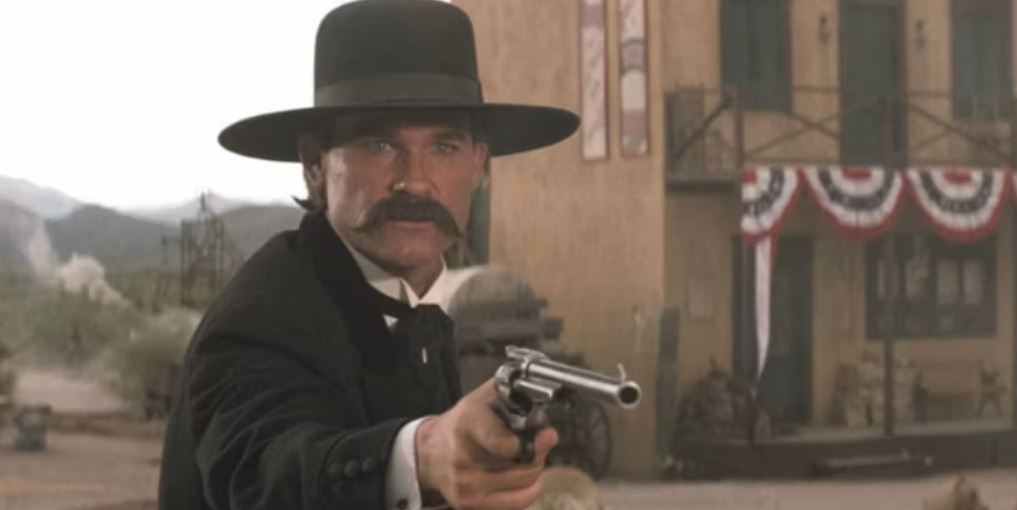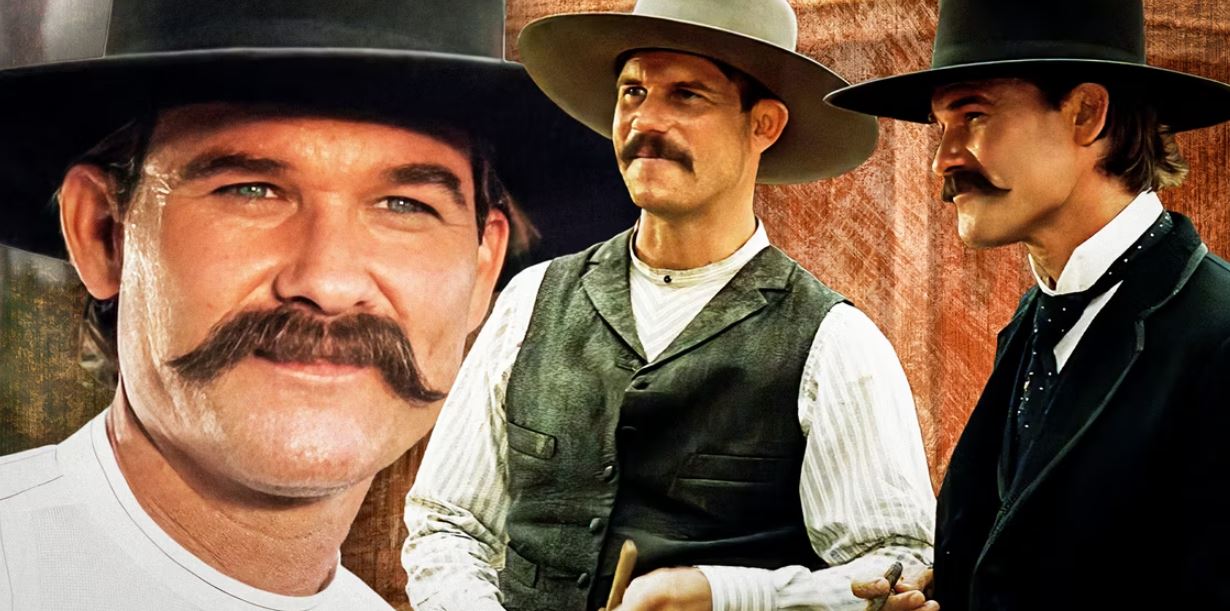Tombstone tells the unbelievable true story of Wyatt Earp and Doc Holliday, two of the most notorious lawmen in the Wild West. The film has been praised for its surprisingly authentic portrayal of their lives, with the film sticking closely to the facts for the majority of the story. However, as with any film based on the truth, Tombstone took a few creative liberties to make the story flow more naturally – but it’s still a loyal adaptation of the lives of Doc Holliday and Wyatt Earp.
What’s most impressive about Tombstone’s ability to present this story in its truest and most accurate form is that it never takes away from the narrative – the truth is just as exciting and engaging as any piece of fiction could be, which is exactly why Earp and Holliday’s tales have been adapted for the screen so many times over the years. Tombstone is filled with great characters and iconic figures, and for the most part, their stories play out just as they did in real life.
The Shootout At The OK Corral Was Based On A Real Gunfight
The Shootout Kicked Off The Earp Vendetta
Though it may seem exaggerated, the events of Tombstone’s gunfight at the OK Corral were actually based on a real shootout that happened in the early days of Wyatt’s life in Tombstone, Arizona. When the Cowboys took issue with the lawman’s interference in the town’s security and politics, they sought to eliminate Earp and his friends by shooting them down in the middle of the street.
At the fight, Wyatt and Doc were responsible for the deaths of three notorious Cowboys: Tom McLaury, Frank McLaury, and Billy Clanton. As displayed in the film, this forced them into conflict with the gang and kickstarted the events that would eventually lead to the death of Wyatt’s brother, Morgan Earp.
Wyatt Earp Didn’t Walk Free After The OK Corral
The Lawman Had To Face Some Consequences
However, one aspect of the true story that Tombstone fails to acknowledge is the consequences of the gunfight, which led to both Wyatt and Doc being imprisoned and tried for their crimes. Ike Clanton was actually responsible for pressing charges, ensuring that Wyatt faced justice for the murder of his brother. After a long trial process, Wyatt and his friends were cleared of all wrongdoing.
Although this was missing from Tombstone, it actually adds a whole new layer to Wyatt’s journey, and would’ve been very interesting to see on-screen. Wyatt barely faces any consequences for his violence in the film, and this could’ve been a fascinating way to see him pay for his own recklessness. It also could’ve enhanced his dynamic with Ike, explaining why he lets him escape after the shootout at the train station.
Wyatt & Virgil Both Accepted Roles As Tombstone’s Law Enforcers
The Film Portrayed Their Jobs Perfectly

The inciting incident of Tombstone is undeniably Wyatt’s arrival at Tombstone; this is where he meets Doc Holliday again, and it’s where he gets into trouble with the Cowboys for the first time. At least this much is accurate, as Wyatt did actually spend lots of time at Tombstone and was responsible for much of its improvement as a city. He fought against the Cowboys for many years, and Tombstone would’ve been a completely different town without him.
Virgil Earp also played a large role in Tombstone’s enforcement of law. As the film depicts, he’s the most active of the Earp brothers in the city’s police department, tackling all the petty crime in the town while Wyatt and Morgan dedicated the majority of their time to fighting the Cowboys.
Wyatt & Virgil Weren’t Hesitant To Leave Retirement
Wyatt’s Reasons For Leaving Retirement Weren’t So Noble
At the beginning of Tombstone, the Earp brothers are solidly in retirement and have no plans to change that any time soon. However, in real life, this wasn’t really a problem. Virgil accepted his position as City Marshall extremely quickly, while Wyatt didn’t have any trouble getting back into the business and making a profit from the town.
The Earps were a fundamental part of Tombstone for several years, and although work wasn’t their primary reason for visiting the town, it quickly became their reason for staying.
Wyatt’s begrudging emergence from retirement allows for some of Tombstone’s best quotes and coolest moments, but it’s not how things went down in reality. The Earps were a fundamental part of Tombstone for several years, and although work wasn’t their primary reason for visiting the town, it quickly became their reason for staying.
Virgil & Morgan Were Both Ambushed By The Cowboys
The Earp Brothers Both Found Themselves Victims Of Cowboy Attacks
After the fight at the OK Corral, the Earp brothers quickly became the Cowboys’ most notorious targets. As depicted in the film, the gang swore that Wyatt and his brothers would face justice for their supposed crimes one way or another, and it’s the ambush on Virgil and Morgan that ultimately sets Wyatt on his road to destruction.
While it may be hard to believe that something so cinematic actually happened in real life, these events are recorded and proven to have taken place. Virgil and Morgan Earp were both victims of premeditated ambushes from the Cowboys following the iconic gunfight, and the latter was killed by Florentino Cruz.
Virgil & Morgan’s Attacks Didn’t Happen On The Same Night
The Film Muddles Some Of The Details
However, these organized ambushes didn’t happen exactly as Tombstone depicts. Most notably, they didn’t happen on the same night; Virgil was attacked first by a rogue group of Cowboys, and Morgan’s death didn’t happen until two months later. This is a small but hugely important detail, as the space between Virgil and Morgan’s ambushes was filled with political tension between the Earps and the Cowboys.
While it’s not historically accurate, decisions like this all contribute to Tombstone being one of Kurt Russell’s best Westerns overall.
Thankfully, the decision to place these two events on the same night was actually a smart one. It makes the entire scenario much more intense and fast-moving, whereas spreading them out could have ruined the pacing and lengthened the runtime unnecessarily. While it’s not historically accurate, decisions like this all contribute to Tombstone being one of Kurt Russell’s best Westerns overall.

Curly Bill Really Murdered Tombstone’s Marshal In The Street
The Cowboy Was Responsible For The Shocking Death
One of the most shocking scenes in Tombstone happens towards the middle of the film, when Curly Bill runs into the street and kills Marshal Fred White in front of several witnesses. This is a major turning point for the narrative, as it paints Curly Bill as a clear villain and sets up his rivalry with Wyatt Earp in the future. This moment was based on the real-life dispute between Curly Bill and Marshal White, which resulted in the latter’s death.
This is a crucial moment in Tombstone’s story as it perfectly encapsulates the breakdown of law and order in the town. Following the chaos of the OK Corral shootout, Tombstone essentially falls into lawlessness and the Cowboys’ power becomes even more dangerous. By killing the most senior officer of the law, Curly Bill displays the strength of the gang and raises the stakes tenfold for the Earp brothers.
In Reality, Marshal Fred White’s Death Was An Accident
Curly Bill Didn’t Intend To Kill The Marshal
While Curly Bill was definitely responsible for White’s death, it didn’t happen exactly as it’s shown in the film. In reality, the shooting was a complete accident that likely came about as a result of drunken behavior and heated gambling. This was confirmed by Fred White on his deathbed, which explains why Bill didn’t face such drastic charges for the accident.
Although it’s not totally accurate, Curly Bill’s rampage is still one of the most shocking scenes in the movie. It’s surprising that Kurt Russell rejected a directing credit for the film, because moments like these are crafted with such strong craftsmanship and a keen eye for detail that explains why Tombstone was such an enormous success at the time of release.
Doc Holliday Was Terminally Sick With Tuberculosis
The Illness Wasn’t Overplayed For The Film
Although Doc Holliday has some of Tombstone’s best one-liners and funniest quips, his illness catches up to him in the end and he dies of late-stage tuberculosis. By the end of the film, he’s essentially unable to walk – he collapses from his horse, he’s coughing up blood, and he struggles to rise from his bed. Unfortunately, this aspect of Doc Holliday’s life was the same in reality, and the real-life figure also died from his sickness.
It would be impossible to tell Doc Holliday’s story without focusing on his tuberculosis, as it was such a defining part of his life by his final days. Despite the film’s attempts to make him a comedic character who laughs off his mortality, the real-life Doc Holliday was permanently broken by the sickness and struggled to continue his work in the final years of his life.
Doc Holliday Didn’t Kill Johnny Ringo
The Reality Was Entirely Different
At the climax of the film, Doc Holliday takes his friend’s place in the duel between Wyatt Earp and Johnny Ringo, overcoming his illness to defeat the leader of the Cowboys in single combat. While this makes for a brilliant ending to the film, focusing on the friendship between these two men, it’s almost entirely fictional and couldn’t have happened in real life. The details surrounding Ringo’s death are unclear, but Holliday couldn’t have been responsible.
There are many theories surrounding the criminal’s death, but most suspect that it was either a suicide or it came at the hands of another of Earp’s men.
The lawman was reportedly in a jail cell in Colorado at the time of Ringo’s death. There are many theories surrounding the criminal’s death, but most suspect that it was either a suicide or it came at the hands of another of Earp’s men. Thankfully, Tombstone decided to opt for a more fulfilling conclusion to the story that gives Holliday his moment to shine.
